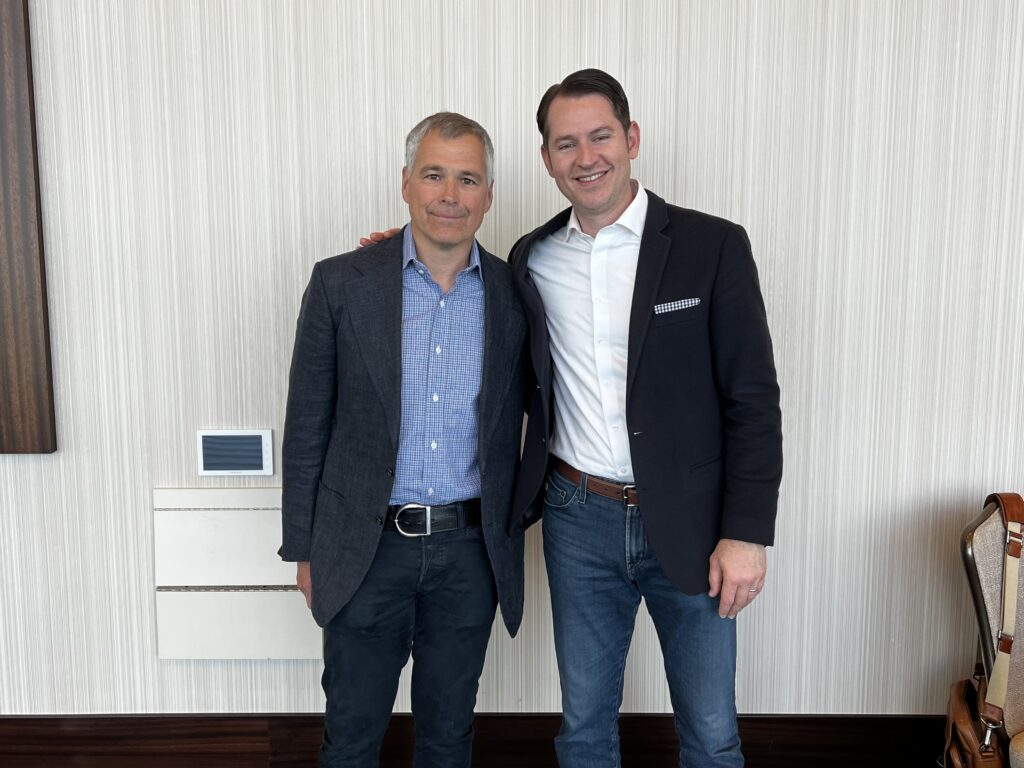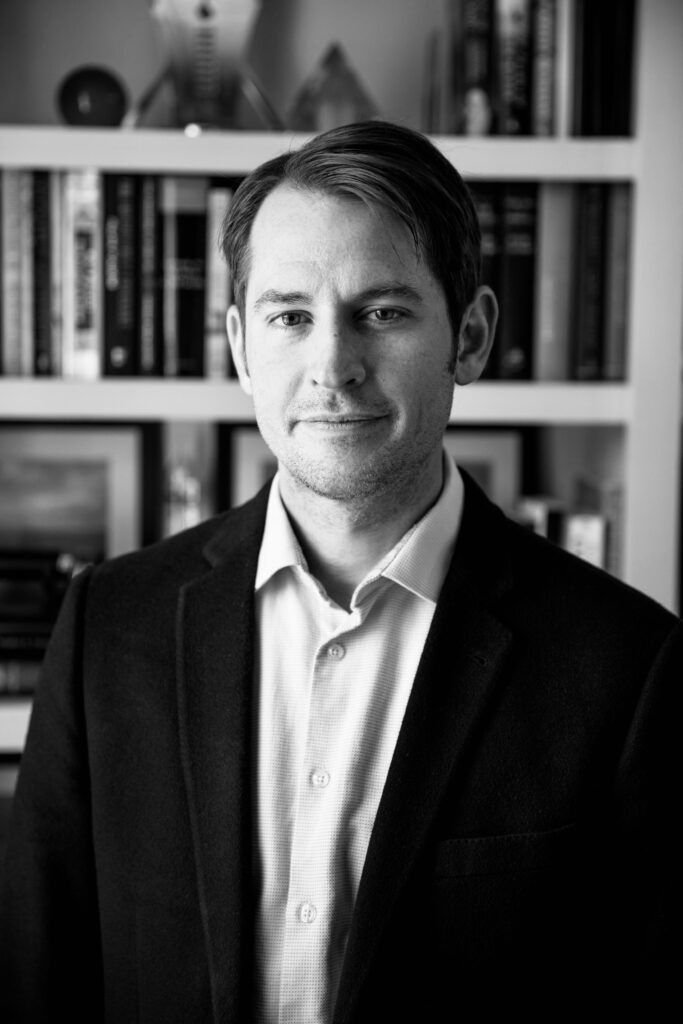Dallas trial lawyer Mike Kaeske only focuses on one case at a time. So when he flew to North Carolina in 2015 with jury consultant Lisa Blue to assess whether a series of nuisance lawsuits against the world’s largest pork producer, Smithfield Foods, was worthy of all of his time, energy and resources for the next five years, he came into the situation with the appropriate amount of skepticism.
Before they had even landed and met with Mona Lisa Wallace, the lawyer who asked them to partner with her on the litigation, Blue, Kaeske and his law partner, Lynn Bradshaw, encountered what would later be key evidence for their roughly 500 African American homeowner clients. As the horizon of North Carolina’s hog country came into view from Blue’s Hawker 800, virtually all they could see were miles upon miles of the hog farms’ Pepto Bismol-pink, open-air waste lagoons and their extremely close proximity to the clients’ homes.
“You look and they’re everywhere,” Kaeske said. “These seven [to] 10 million-gallon pits of feces and urine are just open to the sky. It was certainly very compelling, especially when you could see how close to the houses they were. When you’re on the ground, you have no idea because they’re typically behind fences or they’re way off the road or they’re behind trees.”
What could not be seen at ground-level, however, could be smelled and heard — the stench and sounds of Smithfield’s hog production practices so putrid and disruptive, the plaintiffs claimed, that their quality of life was diminished.

Kaeske’s aerial experience and the resulting litigation is detailed in a new book released this month by Corban Addison, a Virginia-based lawyer-turned-author. Wastelands, which includes a foreword by John Grisham, Addison’s friend and mentor, tells the tale of the rich history of the homeowner plaintiffs and their land that eventually became polluted by Smithfield’s hog farms, the litigation that resulted and the multiple, sometimes dangerous obstacles that Kaeske and the legal team endured throughout the five-year legal battle. After five unanimous jury verdicts worth hundreds-of-millions in favor of the plaintiffs, Smithfield settled the 26 lawsuits in November 2020 for an undisclosed amount and depopulated some of the farms at issue in the lawsuits.
During the book’s official launch last week and the second day of Addison’s book tour, he told a crowd of Dallas Bar Association members during a luncheon at the Arts District Mansion that he decided to write Wastelands after attending the first day of the fifth and final bellwether trial, during which Kaeske delivered what Addison described as a “virtuoso” oral argument that he spent an entire year of billable hours preparing for.
Wastelands is Addisons’ fifth book but first work of nonfiction. The real-life legal thriller is the result of hundreds of hours of interviews with more than 60 people connected to the litigation, months spent on the road and a voluminous public record.
“It’s the best book I’ve ever read about how to try a lawsuit,” said Dallas attorney and author Talmage Boston, who conducted the Q&A with Addison at the DBA luncheon.
And comprehensive, it is. In the truest sense of the phrase “behind the scenes,” Addison’s nearly 400-page narrative splays out the underbelly of taking, building and trying a high-stakes case — from “the call” that began the whole journey to tracking down the best witnesses to testify to sketching scenes from the courtroom.
The Texas Lawbook sat down with Addison after the DBA luncheon to learn more about the author and his writing process for Wastelands. The interview has been edited for brevity and clarity.
To purchase Wastelands, visit corbanaddison.com.

The Texas Lawbook: What led you to make the switch from lawyer to author?
Corban Addison: It was always something that I wanted to do. I didn’t come from a writing family, but I discovered a passion for literature and then a passion for words. I started messing around with it in college and then in law school, wrote manuscripts on the side. I finished my first manuscript as a 1L, which made my grades slump a bit, especially at the University of Virginia. I was passionate about it, and I was also completely benighted about how hard it is to get published. I thought, “Oh, I’ve written the next great bestseller,” and nobody wanted to touch that one. And frankly thank God for that. It was a first try. It was a manuscript. It did not deserve to be published.
After law school, I got a federal clerkship and worked for a small firm in Charlottesville, Virginia, doing business litigation. On the side, I continued to write manuscripts always with the hope of getting published. I finally landed on a topic that gave me wings, which was to write about the law. That was what introduced me to John Grisham and launched my career. My first novel, A Walk Across the Sun, came out in 2012. I wrote on nights and weekends at UVA’s law library while practicing law during the day.
Texas Lawbook: Wastelands is your first nonfiction book. How did your writing process for Wastelands compare to your previous novels, and did any techniques you picked up as a fiction writer influence how you wrote this book?
Addison: I’m really glad I wrote novels first, because with each one I would try new things, new techniques, push myself. Writing fiction taught me the art of storytelling, as did being edited by really good editors who taught me more than I ever learned in English class about how to write — the pacing, the characterization, the detail, the structure of the story, as well as what do you begin with? How do you hook a reader? How do you get past the mushy middle? I had to learn that art and then I was able to bring all of that into this story, which had largely already happened, but not completely. In researching for my novels, I had also learned some of the tools in the journalist’s toolkit — how to develop contacts, how to get a person to trust you with their story.
I believe our stories are one of the most valuable things we have to offer, and for someone to trust you with their story is an incredible gift. I learned how to think about receiving a story as a fiduciary exchange. I had learned to get over my own fear of being rejected, fear of somebody saying no to telling their story to me.
As I developed all of those skills, they beautifully dovetailed into this story. I was going down in eastern North Carolina and getting to sit in people’s living rooms with Black people, many of whom were very poor and had lived hard lives, whose instinct isn’t necessarily to trust somebody like me and open up to somebody like me. I knew that in order to tell the story, I really needed them to tell more than they had the ability to tell on the witness stand in front of the jury. I had to learn to develop who among the 500 clients was I going to focus on and who was going to open up to me? And what story would be most useful on the page?
Texas Lawbook: What is your advice for any lawyers who moonlight as authors or want to?
Addison: I’ll say the same thing to any writer aspiring to be published: You have to develop crocodile skin. It is a business designed to reject you. Over the last 10 years, I’ve seen the pinnacle of publishing and I’ve seen the Death Valley. Even after having gotten published, it doesn’t get easy — except for people like John Grisham. However, people get published all the time, so it’s not that it’s impossible. You just have to believe in yourself to the point where you’re willing to keep trudging along, keep knocking on the door, keep working on your stuff. If you have a talent and if you’re persistent — profoundly persistent — someone will eventually discover you.
